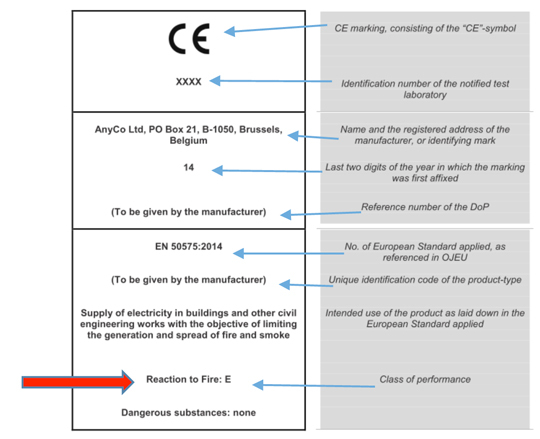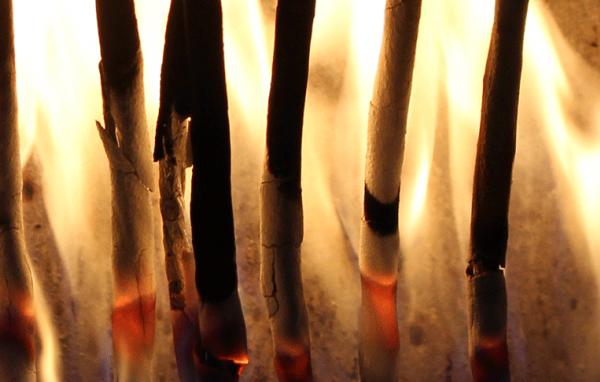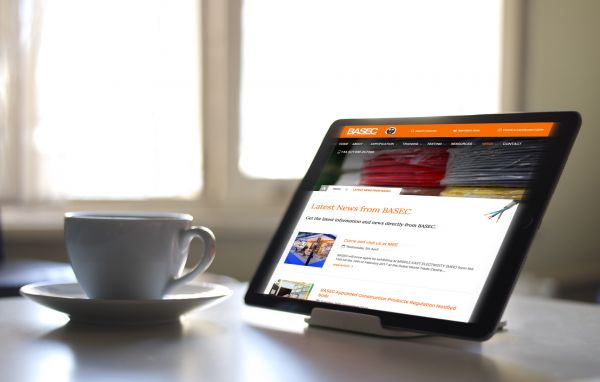Electricians guide to CPR
Below are some Frequently Asked Questions regarding CPR for electricians. If you have any other queries not covered here, please do not hesitate to contact us.
What is CPR and what does it cover?
The Construction Products Regulation is a piece of European legislation (EU Regulation 305/2011) that includes all types of products used in the building industry e.g. doors, window frames, cement, plasterboard, plaster, toilets pans, sinks etc.). Within the EU member states, anything that is FIXED into the fabric of the building is in scope and must be CE marked for CPR. “Safety in case of fire” is one of 7 performance characteristics.
CPR for cables came in to effect on 1 July 2017 so from this date any cable that is within the scope of the regulation must be CE marked for CPR.
Does it relate to all electrical cables?
Currently it only relates to the way cables react to fire not the way they resist fire (continue to operate in a fire). Therefore this relates to those cables that are NOT designed to resist fire. This includes PVC and LSHF armoured, flat twin and earth and single core, and many others including data and optical cables. If they’re fixed into the fabric of the building they are in scope. Appliance power flexes aren’t in scope, or those just buried in the ground and not entering a building.
What does it mean for cables?
The biggest direct impact has been on manufacturers, and the least on end users (such as electricians). In a very simple nutshell for electricians, cables are given classifications according to their performance in a fire (how they REACT). There are 7 classes of cables ranging from Aca (best) - Fca (worst) (Aca, B1ca, B2ca, Cca, Dca, Eca, Fca).
What do these classes mean?
A Class “Aca” cable would be the very best performing cable during a fire and a Class “Fca” would be the worst performing cable under CPR. IMPORTANTLY, the class represents the cables performance to the CPR requirements and not to any product standard to which it claims compliance (e.g. BS 5467). Therefore, there could be two different BS 5467 PVC SWA cables on the market, both fully complying with BS 5467, but under CPR their reaction to fire could be different and therefore would be classified differently.
What’s the difference between the classes?
Different classes require different criteria to be applied. Therefore cables will be made and tested to achieve the requirements of a particular class. It is not just the way they’re made and tested, it involves who tested them and how the manufacturing process is controlled. Cable cannot simply “jump up class” by tweaking the manufacturing or doing some more tests. Class Cca cable could be sold as Class Dca (as Class Cca is superior to Class Dca), but Class Dca cannot be sold as Class Cca.
Who specifies what class cable can be used for what installation?
The classes of the cables may be specified by the client, or may not be. In the UK, there are no official Regulations stating which classes have to be used for which applications. For instance, a client could ask for “BS 5467 SWA PVC cable (CPR Class Cca minimum)”. To fulfil such a contract you would need to use Class C cable. Failure to do so would be a breach of contract – in the same way if a client asked for a BASEC approved cable and you used a non-BASEC cable. In this case it could be difficult to find a Class Cca BS 5467 cable; however, a BS 6724 cable may be found which was Class Cca and this change of specification would need to be cleared with the client.
Do higher classes of cable cost more?
The cost for cable may be greater as you go up the performance scale. A client should specify only what they really need for their installation. For instance, conductors in a twin and earth cable made of gold would work, but they would be very expensive and are not required. In the same way, if the installation specifies a Class Dca cable but the client then asks for a Class B1ca cable – it would work but it could be expensive and might not be justifiable.
What classes will I see?
Typically you won’t see much if any class “Aca” of "B1ca" cable as these tend to be for specialist applications. In the main you will probably be asked for classes Eca and Dca, with some Cca, although certain high-end clients in high-risk industries may occasionally request class B2ca.
When will these classes matter?
The impact on electricians is mostly when quoting for jobs. If a class has been specified you need to make sure that you are quoting for the correct class of cable. When ordering and collecting your cable at the wholesalers ensure that you have selected the right class for the job.
How will I know what class of cable I have?
All cable sold under the CPR needs to be clearly labelled as to its class – this could be on the cable and a label will be applied to reel or if sold as a pre-cut shank, the label may be applied to the shank. The wholesaler is responsible for ensuring that the cable has the appropriate marking before it is offered for sale. Please note that cable already in the supply chain on 1 July 2017 does not need to be classified or CPR labelled, but there is unlikely to be much of this now so do treat any you see with caution.
What does Reel / Shank label look like?
Below is an example taken out of the Regulation of a label you may see (although this is an example and may vary slightly), the class of performance is the key. This label would be applied to a Class Eca cable.

Will BREXIT cause this legislation to be repealed?
Under the EU Withdrawal Bill, all existing EU legislation will be copied in to UK law. This means that the Construction Products Regulation will continue to be law in the UK after Brexit in March 2019. The law could, in theory be changed at some point in the future, but there is no indication of this at the moment and so it is very much 'business as usual' for the foreseeable future.



